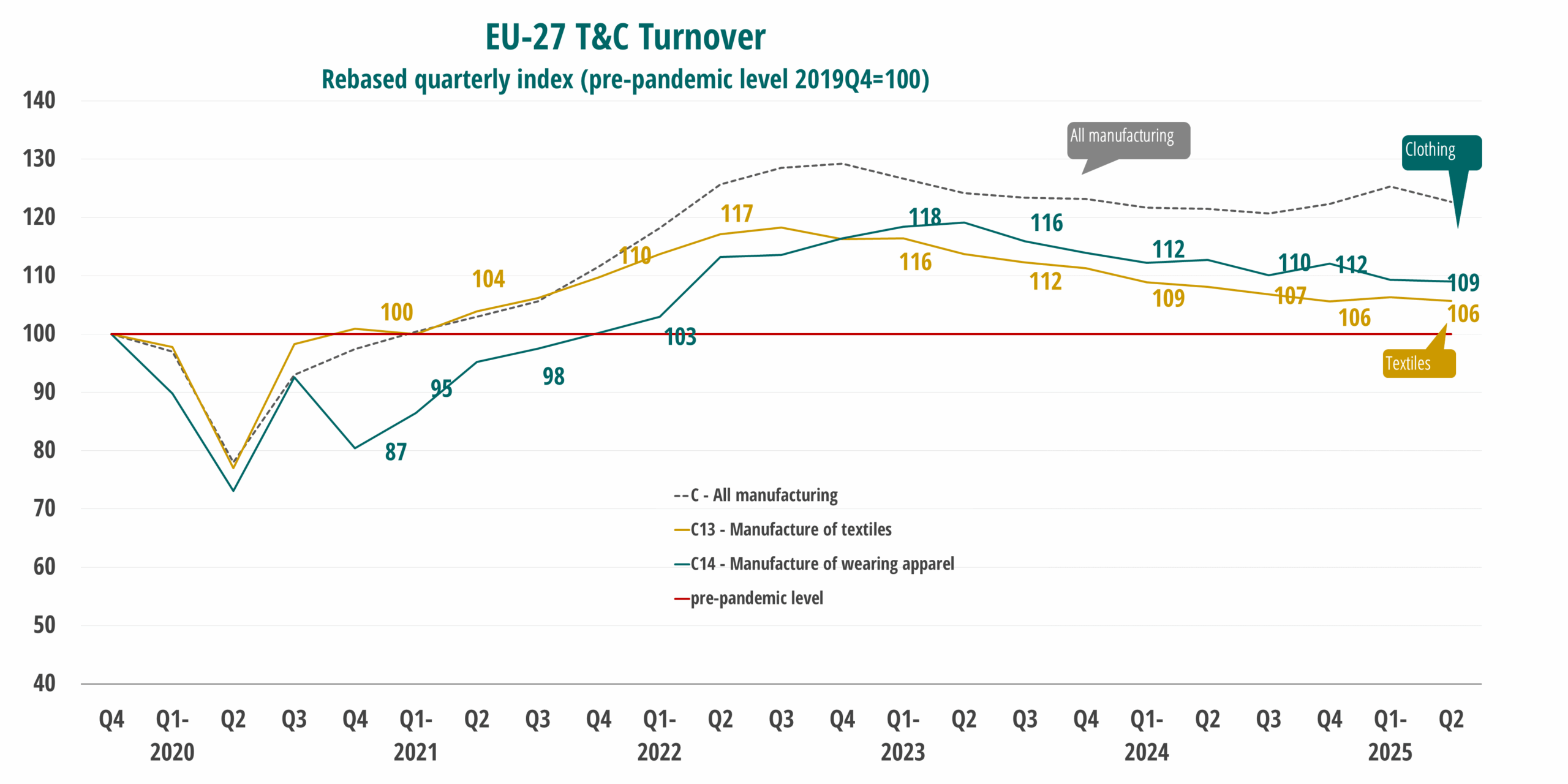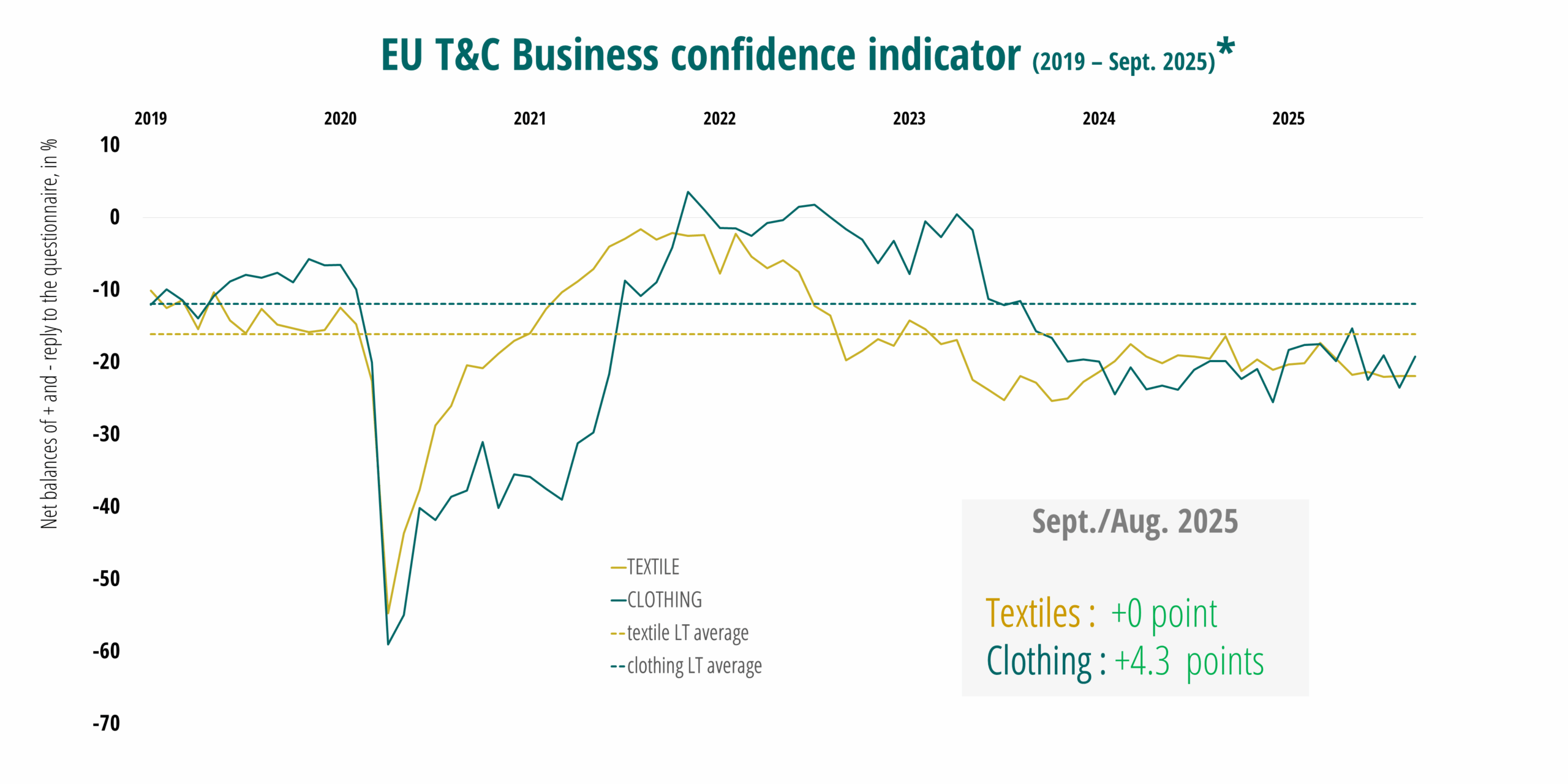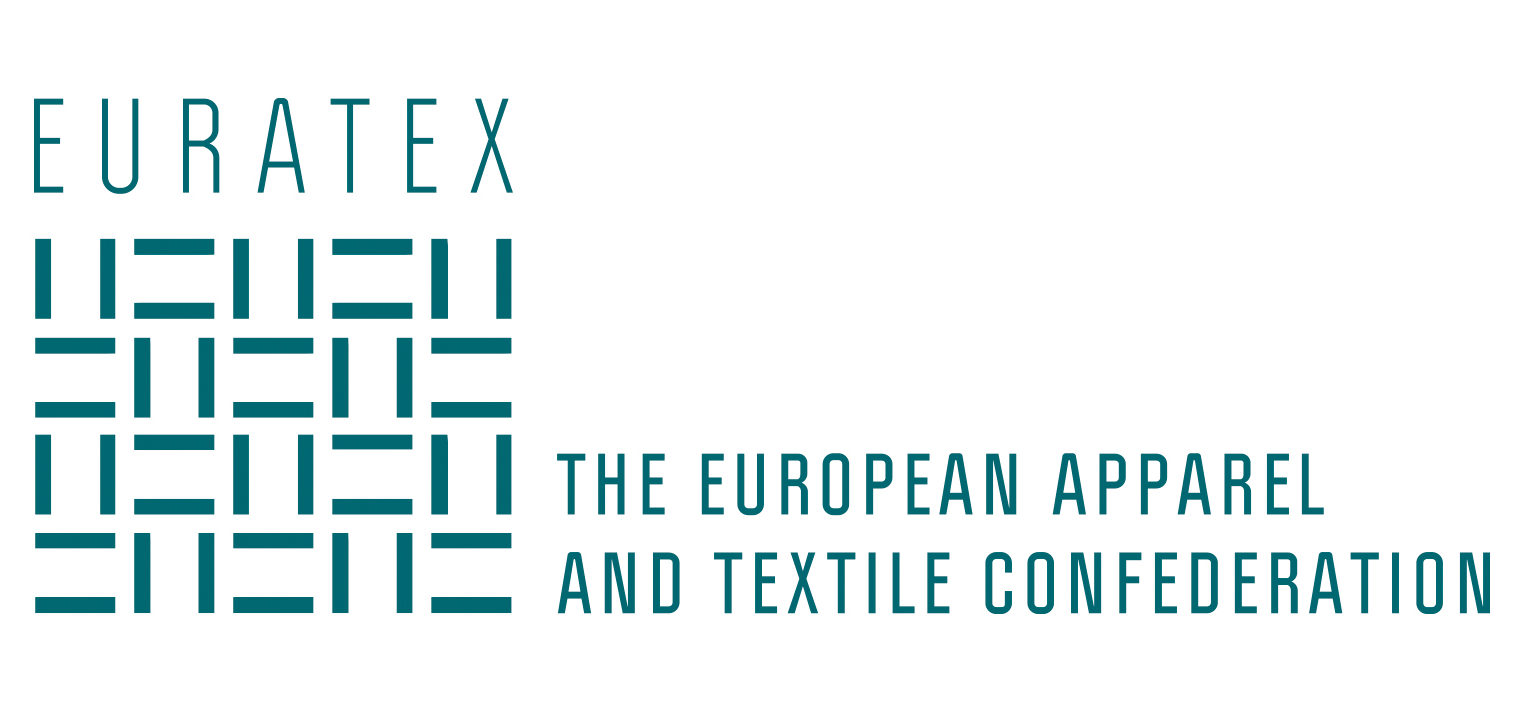Second quarter 2025 and prospects
EU textile & clothing industry faces continued strain in Q2 2025, but positive signals for the clothing industry emerge, in terms of improved business confidence.

The EU textile and clothing industry (T&C) has faced persistent challenges since 2024, with declining turnover driven by weak demand, low-cost import competition, and falling global shipments, leading to continued year-on-year sales drops in both textiles and clothing through mid-2025.
EU textile production has continued to decline since mid-2022. Lack of demand remains the single most important factor limiting production and business activity, followed by labour shortages.
Employment in the sector remained under threat, due to restructuring, high costs, and skill shortages.
On the external side, EU imports of T&C from third countries rose, while exports declined in value, leading to a year-on-year increase in the EU27 trade deficit. This shift was driven by rising imports from China and Bangladesh, as well as by changes in global sourcing amid tariff and policy uncertainty.





The EU business sentiment in September 2025* remained largely unchanged in the textile industry, but showed a strong improvement in the clothing sector. The positive trend in the clothing industry was driven by managers’ brighter opinion on the adequacy of stocks of finished products, on the current level of order books and on production expectations. Besides, employment expectations saw a notable deterioration.

For more information on our Economic Update, please contact Roberta Adinolfi.
Get your copy now!
Keep up to date with the latest facts and figures of the Textile and Clothing sector
by subscribing to the Economic Update!
Click here to fill in the subscription form or contact roberta.adinolfi@euratex.eu.
